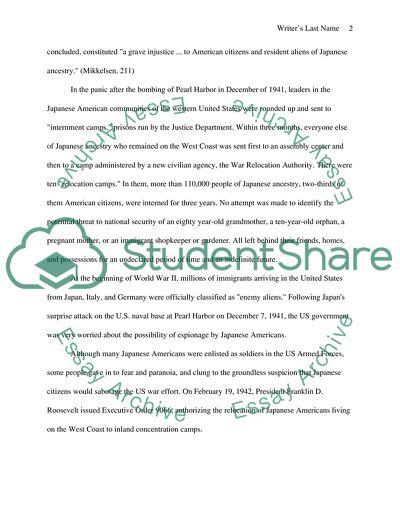Cite this document
(Japanese Americans and World War II Term Paper Example | Topics and Well Written Essays - 1500 words - 1, n.d.)
Japanese Americans and World War II Term Paper Example | Topics and Well Written Essays - 1500 words - 1. Retrieved from https://studentshare.org/history/1702866-japanese-americans-in-wwii
Japanese Americans and World War II Term Paper Example | Topics and Well Written Essays - 1500 words - 1. Retrieved from https://studentshare.org/history/1702866-japanese-americans-in-wwii
(Japanese Americans and World War II Term Paper Example | Topics and Well Written Essays - 1500 Words - 1)
Japanese Americans and World War II Term Paper Example | Topics and Well Written Essays - 1500 Words - 1. https://studentshare.org/history/1702866-japanese-americans-in-wwii.
Japanese Americans and World War II Term Paper Example | Topics and Well Written Essays - 1500 Words - 1. https://studentshare.org/history/1702866-japanese-americans-in-wwii.
“Japanese Americans and World War II Term Paper Example | Topics and Well Written Essays - 1500 Words - 1”, n.d. https://studentshare.org/history/1702866-japanese-americans-in-wwii.


